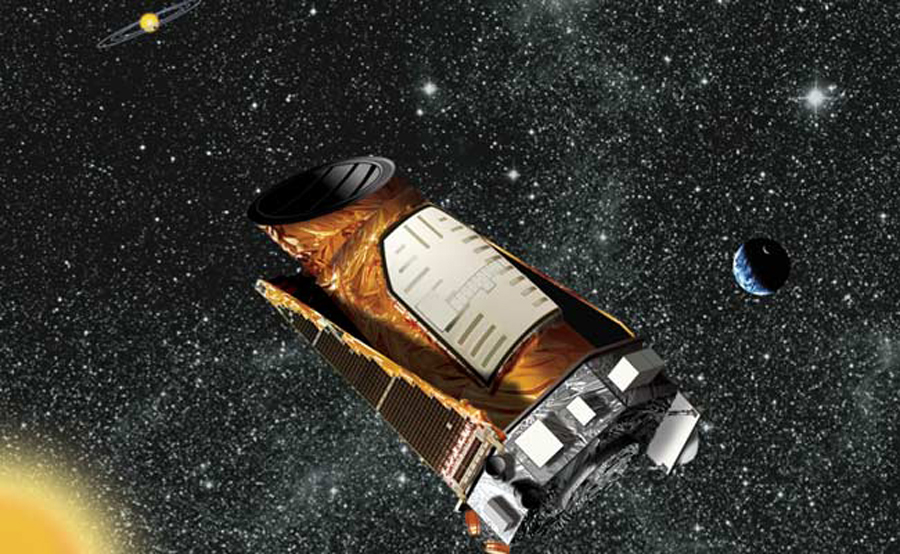
NASA's planet-hunting Kepler space telescope may be down, but it's far from out.
Though a glitch ended Kepler's original operations last May, the mission continues to discover distant worlds, adding a whopping 715 new exoplanets to the tally on Wednesday (Feb. 26). Several thousand more will likely follow in the years to come, and a new mission could get Kepler scanning the heavens again in the near future.
"Kepler is the gift that keeps on giving," Sara Seager, a professor of physics and planetary science at the Massachusetts Institute of Technology, told reporters Wednesday during a NASA press conference that announced the 715 newfound worlds. [Kepler's Exoplanet Bonanza Explained (Infographic)]
![A powerful new technique for hunting alien planets yields a major new crop of new worlds. [See how Kepler made the planet discoveries in this Space.com infographic]](https://cdn.mos.cms.futurecdn.net/usuyLzWSuTvRamQKguY9DN.jpg)
Revolutionizing exoplanet science
Astronomers have discovered about 1,700 exoplanets to date (the exact number depends on which of the five main alien-world catalogs is consulted). Kepler has found more than half of them; Wednesday's announcement brought its current tally to 961.
And the finds should keep rolling in from the $600 million Kepler mission, which launched in March 2009. The observatory has detected about 3,600 planet candidates, and mission scientists expect that about 90 percent of them will eventually be confirmed as bona fide alien worlds.
But Kepler is about much more than just sheer numbers. The main goal of the spacecraft's original mission was to determine how commonly Earth-like planets occur throughout the Milky Way galaxy. Team members are confident they will be able to answer this question using the data Kepler has already gathered, which takes some time to get through.
Breaking space news, the latest updates on rocket launches, skywatching events and more!
"We have confidence that there will be planets like Earth in other places," Seager said.
Indeed, one research team recently used Kepler observations to estimate that about 20 percent of sun-like stars have at least one Earth-size planet orbiting in the habitable zone— that just-right range of distances where liquid water, and perhaps life as we know it, could exist.
Kepler has revolutionized the field of exoplanet science in other ways as well, teaching astronomers that multiplanet systems are common in the Milky Way and that small, rocky planets like Earth are much more abundant than gas giants such as Jupiter and Saturn.
A new mission?
Kepler's original planet hunt ended in May 2013 when the second of its four orientation-maintaining reaction wheels failed, robbing the observatory of its ultraprecise pointing ability.
But team members say that Kepler remains extremely capable with two good wheels, and they've proposed a new mission called K2, which would allow the spacecraft to keep hunting for exoplanets, as well as other phenomena and objects such as supernova explosions, asteroids and comets.
The K2 proposal is currently under review at NASA headquarters, and a final decision is expected by May or so, officials have said.
Kepler team members announced Wednesday (Feb. 25) that the telescope had lost a second detector, leaving it with 19 operational "science modules" with which to gather data. But the failure shouldn't affect the spacecraft's performance much if at all, mission officials said.
"We were surprised by the loss of module 7, but it appears to have failed randomly, much like module 3 did," said Kepler deputy project manager Charlie Sobeck, of NASA's Ames Research Center in Moffett Field, Calif. "It will have very little impact on [Kepler's] ability to continue doing science."
Follow Mike Wall on Twitter @michaeldwall and Google+. Follow us @Spacedotcom, Facebook or Google+. Originally published on Space.com.

Join our Space Forums to keep talking space on the latest missions, night sky and more! And if you have a news tip, correction or comment, let us know at: community@space.com.

Michael Wall is a Senior Space Writer with Space.com and joined the team in 2010. He primarily covers exoplanets, spaceflight and military space, but has been known to dabble in the space art beat. His book about the search for alien life, "Out There," was published on Nov. 13, 2018. Before becoming a science writer, Michael worked as a herpetologist and wildlife biologist. He has a Ph.D. in evolutionary biology from the University of Sydney, Australia, a bachelor's degree from the University of Arizona, and a graduate certificate in science writing from the University of California, Santa Cruz. To find out what his latest project is, you can follow Michael on Twitter.
